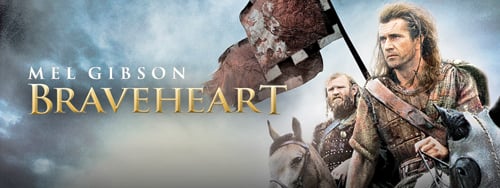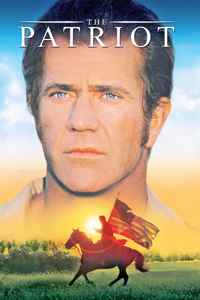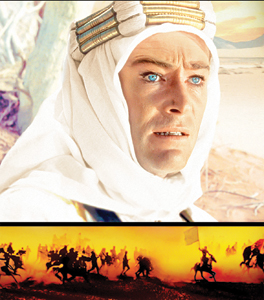If you are in the mood for feeling patriotic, check out these inspirational historical films we have selected for you. They each have different qualities that inspire national pride, from their clear patriotic agenda to the way they capture the very essence of freedom...
f.e
If you are in the mood for feeling patriotic, check out these inspirational historical films we have selected for you. They each have different qualities that inspire national pride, from their clear patriotic agenda to the way they capture the very essence of freedom...So sit back, put one of these in the DVD player, and enjoy a classic movie on a Sunday afternoon...
The Battle of Algiers (1966)
Gillo Pontecorvo’s ‘The Battle of Algiers’ remains as relevant as ever, its pseudo-documentary style still feels as headline-fresh as its content. Pontecorvo’s exhilarating political saga covers the insurgency by Algerian militants against the French occupation of Algiers between the early ‘50s and the mid-60s. Despite being banned by the French government, Battle was a box-office hit with both Algerian and western audiences in its original release.
Rather than assembling war footage, director Pontecorvio has made a crucial strategic decision to put human faces and relatable idividuals behind various conflicting ideologies. Most of this political feature is shot in flashback, presented as the memories of Ali (Brahim Haggiag), a leading member of the Algerian Front de Liberation Nationale (FLN), when finally captured by the French in 1957. The film traces the rebels’ struggle and the increasingly extreme measures taken by the French government to quell what soon becomes a nationwide revolt. After the flashback, Ali and the last of the FLN leaders are killed, and the film takes on a more general focus, leading to the declaration of Algerian independence in 1962.
Inevitably, given the times we live in, what really resonates on watching Algiers is its message about the widespread loss of civilian life and the staggering destruction to civic infrastructure as the heaviest costs of violent uprisings. Above that, we learn the harsh lesson that all occupations are doomed to fail.
Braveheart (1995)

Based on a legend of medieval Scotland, ‘Braveheart’ is a big, brave, heartfelt motion picture, an epic that doesn’t lose itself in its epic scale. Mel Gibson directs this 13th-century saga of Scottish revolt against English tyranny and succeeds in bringing to life the reality of Scottish patriotism and brilliantly captures the spirit of revolution. Little wonder it won an Oscar for best picture.
‘Braveheart’s’ grandiosity is enhanced by its richly textured costumes, from kilts to silks, designed by Charles Knode. Adding to the film’s visual splendour is photography by John Toll and James Horner’s highland- flavoured music heightens the medieval romance of the film.
Set in the Scottish Highlands in the late 13th century, it tells the story of Sir William Wallace (Gibson), a great military hero who led the fight for Scottish freedom against England’s King Edward I (Edward Longshanks).
Is ‘Braveheart’ historically accurate? The narrator charges that ‘history is written by hangmen’, so probably not; but Gibson’s focus is on heroism, not history. Today we also need heroes to boost our morale and movies like ‘Braveheart’ do give us that kind of patriotic-adrenaline rush!
 The Patriot (2000)
The Patriot (2000)
A dramatic tale of the Revolutionary War, ‘The Patriot’ is an American epic historical fiction war film directed by Roland Emmerich. It’s 1776 and Mel Gibson is Benjamin Martin, a war hero turned pacifist widower committed to looking after his farm and his flock of kids.
Unfortunately, the war against oppressive England kicks off and only minutes after fighting is okayed, his eldest son Gabriel (Ledger) signs up, much to the chagrin of Dad. But as the warring factions approach the Martin homestead, pressure mounts and tragedy ensues. A troop of British Redcoats, led by Colonel Tavington (Jason Isaacs), attacks the farm, burns it to the ground and, following specific orders from Tavington, murders one of Martin’s sons. Martin, of course, picks up arms, begins rounding up his own militia, goes after Tavington and succeeds in wiping out a bunch of the Colonel’s men. Playing a cat-and-mouse game, Martin and Tavington, who reports to the famous Lord General Cornwallis (Tom Wilkinson), become the bitterest of enemies.
‘The Patriot’ also delivers huge doses of highly kinetic and violent battle scenes peopled by hundreds of extras. And three-time Oscar-nominated cinematographer Caleb Deschanel again delivers a magnificent palette here, exploiting the magnificent, often golden South Carolina countryside and apt 18th-century locations and settings.
Lawrence of Arabia (1962)
It is a 1962 epic drama based on the life of T. E. Lawrence. Directed by David Lean, the film stars Peter O’Toole in the title role. It is widely considered one of the greatest and most influential films in the history of cinema.
This sweeping, highly literate historical epic covers the Allies’ mideastern campaign during World War I as seen through the eyes of the enigmatic T. E. Lawrence (Peter O’Toole, in the role that made him a star). After a prologue showing us Lawrence’s ultimate fate, we flash back to Cairo in 1917. A bored general staffer, Lawrence talks his way into a transfer to Arabia. Once in the desert, he befriends Sherif Ali Ben El Kharish (Omar Sharif, making one of the most spectacular entrances in movie history) and draws up plans to aid the Arabs in their rebellion against the Turks.
The film depicts Lawrence’s experiences in the Arabian Peninsula during World War I, in particular his attacks on Aqabaand Damascus and his involvement in the Arab National Council. Its themes include Lawrence’s emotional struggles with the personal violence inherent in war, his own identity, and his divided allegiance between his native Britain and its army and his new-found comrades within the Arabian desert tribes.
The film is visually stunning throughout; the distinguished cinematographer captures vividly the vistas of the large uninhabited deserts, the caravans of camels, the masses of tribesmen, elements not seen before.